Meet the creatures that really are part of your world.
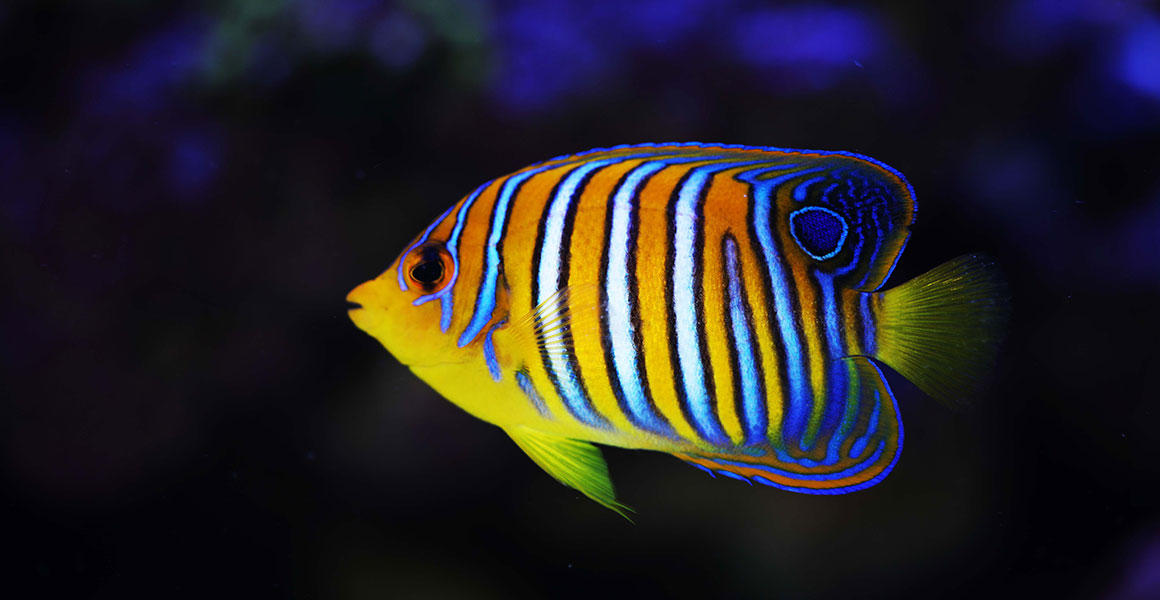
Some think the regal angelfish may have inspired Flounder’s look in the animated Little Mermaid film. © Pavaphon Supanantananont/ Shutterstock
Disney’s 1989 retelling of Hans Christian Andersen’s fairytale The Little Mermaid brought a host of iconic characters into our lives. With the live-action remake now out as well, we’re taking a look at the wildlife that might have inspired them.
1. Scuttle
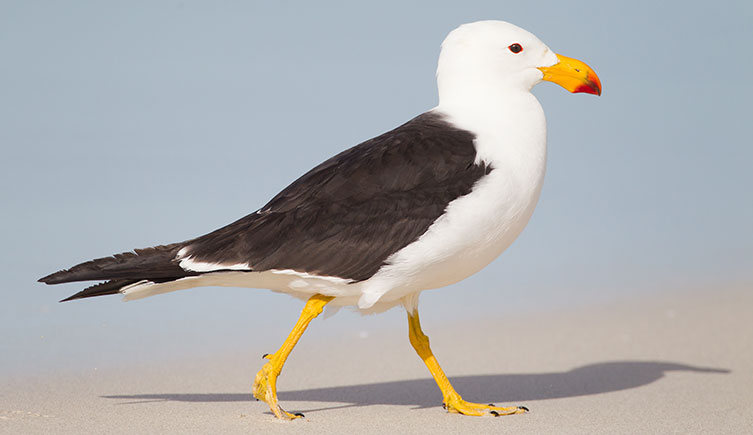
Scuttle looks a lot like a Pacific gull, but is this the species that inspired him? © Jukka Jantunen/ Shutterstock
The eccentric Scuttle is a gull, of which there are more than 50 species worldwide. He most likely belongs to the genus Larus, which are generally medium to large birds.
Gulls have a predominantly seafood-based diet that includes fish, crustaceans and cephalopods, but they don’t restrict themselves to this. In 2020, a great black-backed gull was recorded downing a whole live rabbit on Skomer Island. These are the largest gulls, with a wingspan of up to 1.7 metres.
Some gulls also thrive in urban environments, filling up on our discarded food or in some cases not-yet-discarded food. Seagulls don't need cutlery to pinch your chips, so it’s perhaps no surprise that Scuttle doesn’t know what a fork is.
In Disney’s live-action remake, however, Scuttle has had a dramatic transformation from gull to gannet.
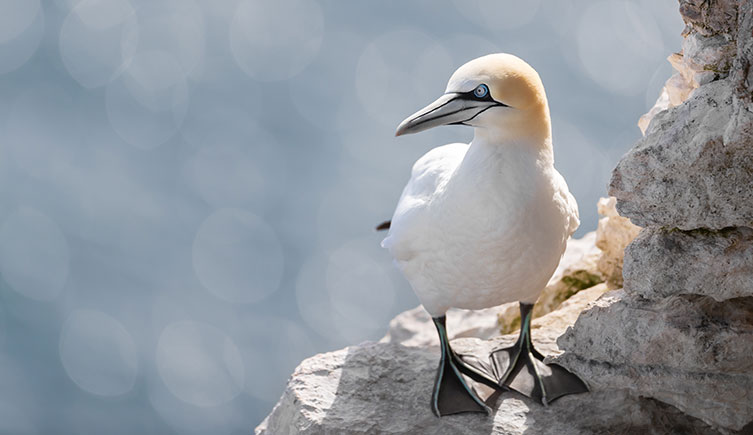
Gannets have a number of adaptations that allow them to dive into the ocean at tremendous speeds. © Giedriius/ Shutterstock
Gannets are also seabirds. They hunt for fish by diving into the ocean at speeds of up to 100 kilometres per hour from heights of up to 30 metres. They have several adaptations to help them with this, including their nostrils being inside their mouth rather than on the outside of their beak and air sacs in their bodies that cushion the blow as they hit the water at tremendous speeds.
But seabirds are facing troubling times. Some are accidentally feeding plastic to their young, while others are building their nests out of it or getting caught up in rubbish with fatal consequences. The Birds and Debris Project allows people all over the world to report birds entangled in debris, including in plastic. Reporting entanglement helps scientists understand how widespread the issue is and could lead to us finding better ways of tackling this pollution problem.
2. Flounder
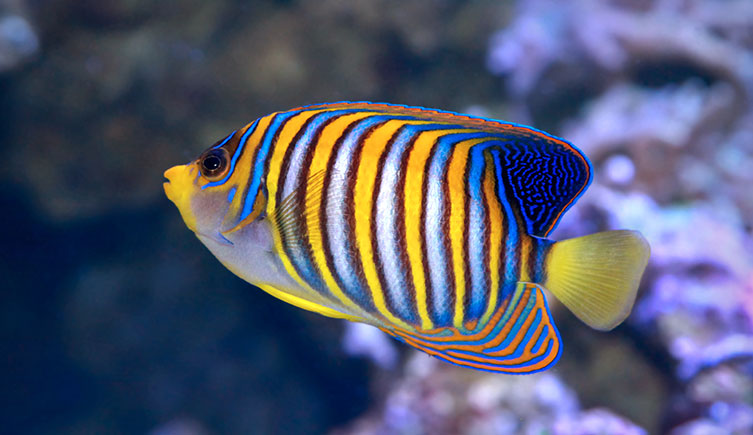
Flounder is bright yellow and blue in the original Little Mermaid film. This suggests he may have been inspired by brightly coloured reef fishes. © Tatiana Belova/ Shutterstock
Flounder is Ariel’s best friend, but what fish species Disney were using as inspiration for him in 1989 is not particularly clear.
One thing’s certain, Flounder is not a flounder.
There are a few fish that are known as flounders. They’re not particularly closely related, but what they have in common is that they are all flatfishes that live on the seafloor.
It might look like flatfish lie flat on their bellies, but they actually lie on their sides. The side of their body that faces the surface of the ocean is often coloured to help camouflage them, while the side that faces the seafloor tends to be lighter.
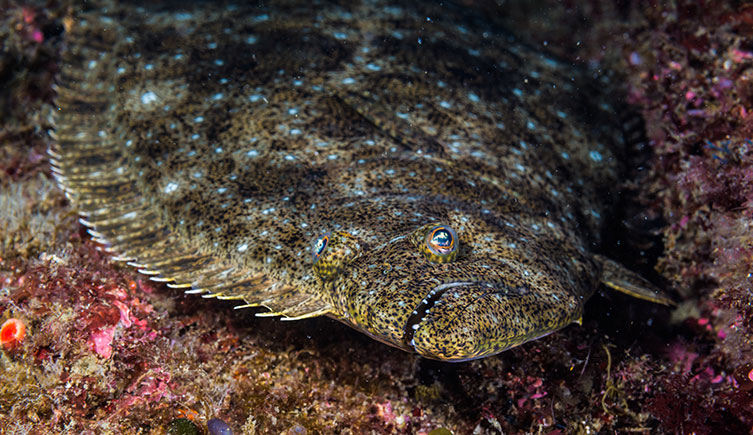
This is an olive flounder, Paralichthys olivaceus. These flatfishes share a name with Disney's Flounder, but they look nothing like him. © tank200bar/ Shutterstock
But in the original film, Flounder is not a flatfish and is mostly yellow with bright blue stripes. So, what is he? Based on his bright colours alone, Flounder could be a reef fish. Fish that live on coral reefs tend to be more colourful than those that live in other habitats. The complex structure of a reef can help hide even the most brightly coloured fish. Bright colours and eyespots can also help reef fish deter predators looking for a meal.
There’s some speculation that Flounder might have been inspired by the regal angelfish, Pygoplites diacanthus.
But there’s also the chance that Disney's animators might have actually been working from inspiration closer to home. Given its US location, it’s possible the studio might have based Flounder on the Hawaiian sergeant, Abudefduf abdominalis. Not only was this species more commonly available in the aquarium trade at the time it also makes sense geographically. In some ways these fish are closer in appearance to Flounder than the regal angelfish, as they have stripes that run only halfway down their sides.
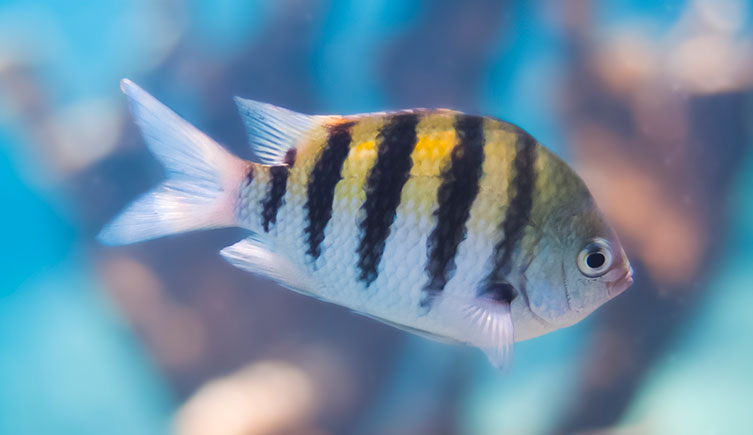
Flounder has a new look in the live-action remake of the Little Mermaid. He is now almost certainly based on the sergeant major, Abudefduf saxatilis. © Matthew T Rader, MatthewTRader.com (CC-BY-SA 4.0) via Wikimedia Commons
Other options might be the convict tang, Acanthurus triostegus, which has a similar stripe pattern, or even the bright yellow tang, Zebrasoma flavescens.
As for the live-action remake, there have been suggestions that the new Flounder might be based on the sergeant major, Abudefduf saxatilis, which might add some weight to our Hawaiian sergeant theory. But along with Sebastian, the new Flounder has caused a bit of a stir, with some of the opinion he is now too realistic.
3. Ursula
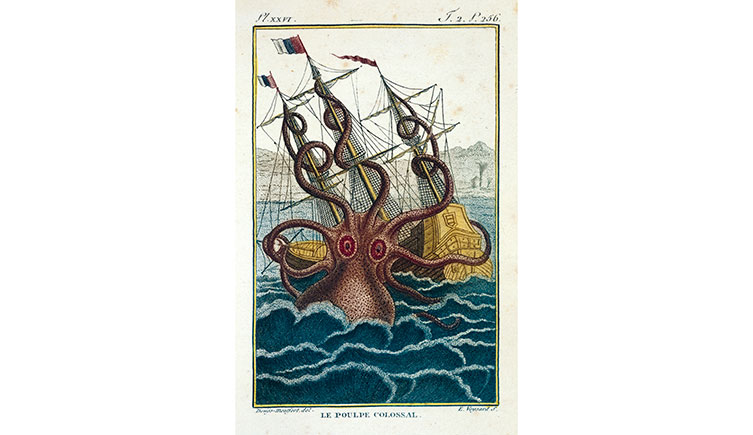
Tales of the mythical kraken may have inspired the sea witch Ursula's villainous behaviour in her final battle.
Villainous Ursula has a human upper body and a collection of octopus arms instead of legs. While sea serpents and mermaids have been present in folklore for hundreds of years, it wasn’t until the 2000s that someone came up with the term Caecelia for half-human, half-octopus creatures - not to be confused with caecilians, which are amphibians.
The kraken is an aggressive, mythical cephalopod capable of taking down ships and Ursula certainly seems to have been inspired by it. In her final battle, she grows to a massive size and sinks a ship while thrashing her enormous arms about. In reality, tales of the kraken probably stemmed from people seeing washed-up giant squids and large octopuses that had been partly digested or started to rot.
In the live-action Little Mermaid, Ursula appears to have bright blue, bioluminescent suckers. Bioluminescence is when organisms can create their own light, like glow worms do. There are only a few octopuses that are known to use bioluminescence, these include Japatella and Stauroteuthis syrtensis, which have bioluminescent suckers like Ursula.
Though blue-ringed octopuses make vibrant blue rings appear on their bodies when threatened, this is not actually bioluminescence but the result of specialised cells called chromatophores and iridophores. Some cephalopods, such as Histioteuthis and Taningia, can use bioluminescence via photophores and vampire squids have bioluminescent mucus.
In the animated version, when Ariel visits Ursula’s lair for some misguided dating advice you might have noticed that on the way in can be seen what appear to be hydrothermal vents. These are hot-spring-like features on the seafloor, and depending on how hot they are, they either spew out white or black material, which looks remarkably like smoke.
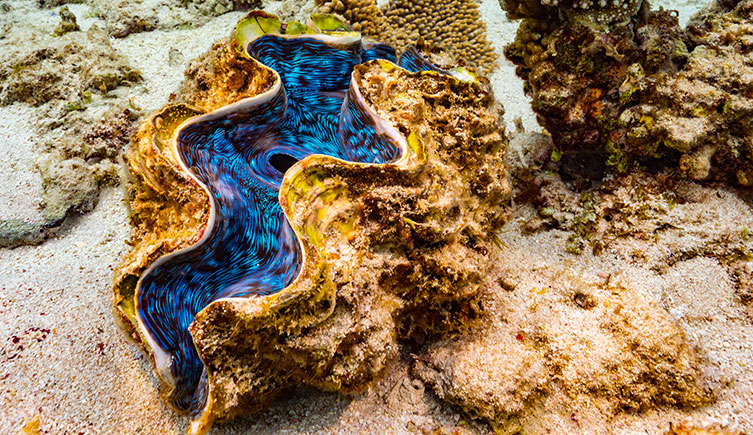
Giant clams are the world's largest bivalves, but in reality they would still be too small for a sea witch to sit inside © kai egan/ Shutterstock
After making it through Ursula’s garden of poor, unfortunate souls, we meet the sea witch for the first time sat in a large spiralled shell. In the new film she has switched this out for a giant clam.
The largest spiralled shell in the world belongs to the Australian trumpet, which can be up to 91 centimetres long. Giant clams can be up to 1.2 metres across and are the largest species of bivalve. So in reality, it would be a very tight squeeze for a human-sized octopus to fit inside either.
4. Flotsam and Jetsam
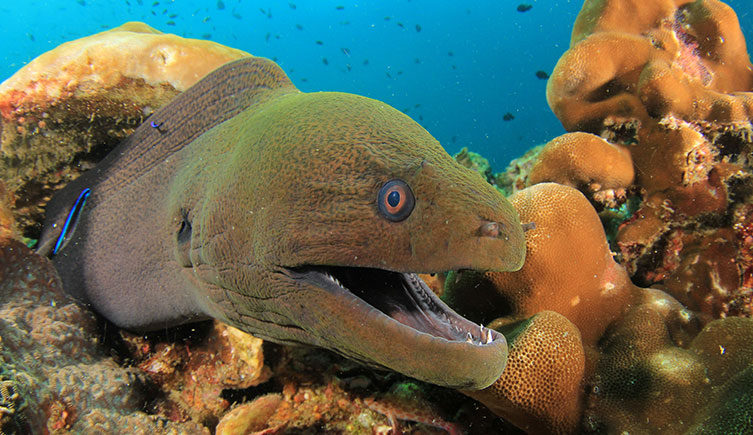
Moray eels might look a bit sinister, but they can't help their appearance © Rich Carey/ Shutterstock
Flotsam and Jetsam are Ursula’s minions. They’re widely agreed to be moray eels.
Real life moray eels might look a bit sinister to some, with their unblinking eyes and their mouths nearly always open. Moray eels, of course, can’t help their appearance. Fish don’t have eyelids so they can’t blink and eels don’t have gill covers. This means that to be able to breathe they have to open and close their mouths to flush water over their gills.
Did you know that moray eels also have two sets of jaws? These fish have a set of pharyngeal jaws in their throats that are loaded with sharp, backwards-facing teeth, which they use to pull prey down their gullet. Most fish have pharyngeal jaws, which they use for a whole range of things. For example, parrotfish use theirs to grind up hard coral that they then poop out as sand.
Disney’s fictional eels are named after ocean trash. Jetsam is cargo intentionally discarded from a ship or wreckage while flotsam are goods that have floated to the surface from a sunken vessel.
5. Max
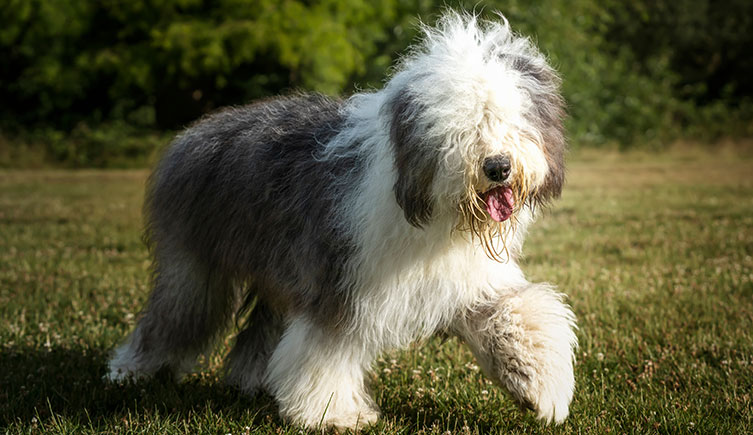
Prince Eric's dog Max is an Old English sheepdog © chrisukphoto/ Shutterstock
We couldn’t possibly leave the energetic Max off our list. Prince Eric’s loyal pup is almost certainly an Old English sheepdog.
Old English sheepdogs have been bred for hundreds of years. The Kennel Club describes them as ‘profusely coated all over’ with fur that is ‘grey, grizzle or blue’. Some, like Max, have bold, white patches.
There’s some suggestion this breed is descended from the equally shaggy South Russian Ovcharka, which was bred to guard flocks of sheep.
In the last 100 years the Old English sheepdog has had a profile boost, thanks to being paint company Dulux’s mascot since 1961.
6. Ariel
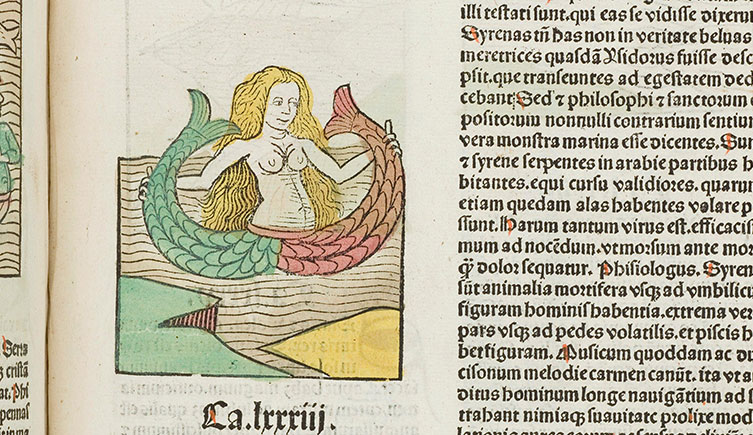
A mermaid from Jacob Meydenbach's Ortus Sanitatus, 1491 © Wellcome Collection. Public Domain Mark.
Last but certainly not least, we can’t round off our list without mentioning King Triton’s youngest daughter, Ariel, the Little Mermaid herself.
Mermaids have a long and rich history in folklore. Stories stemmed from sailors who travelled beyond the horizon on wooden boats and were expected to bring back fantastical tales of the things they had seen after years away from home at a time.
There are some suggestions that animals, such as dugongs and manatees, might have inspired tales of mermaids.
Find out more about how the natural world inspired mythological mermaids and sea monsters.
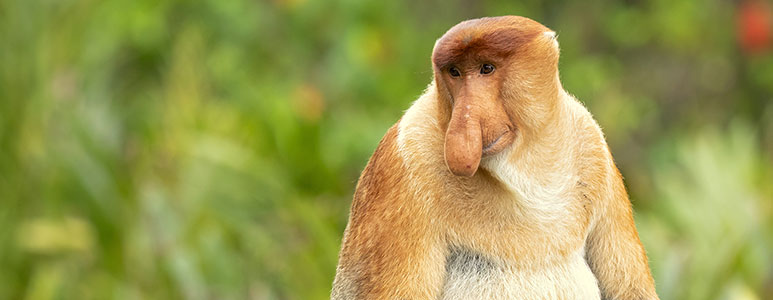
What on Earth?
Just how weird can the natural world be?
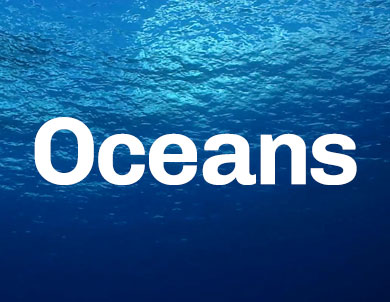
Discover oceans
Explore life underwater and read about the pioneering work of our marine scientists.
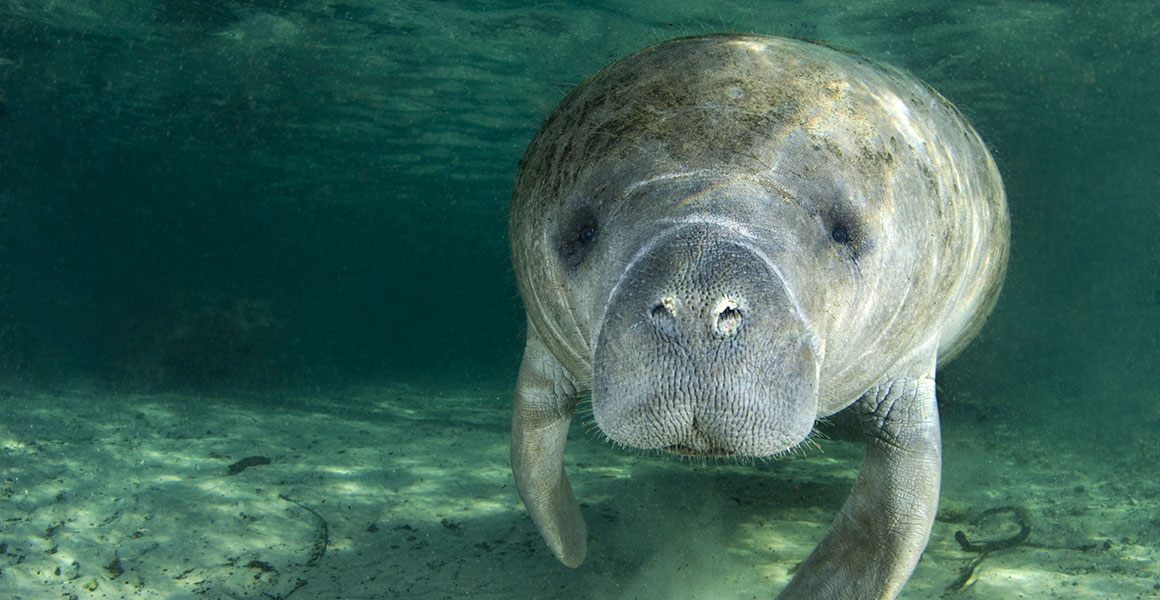
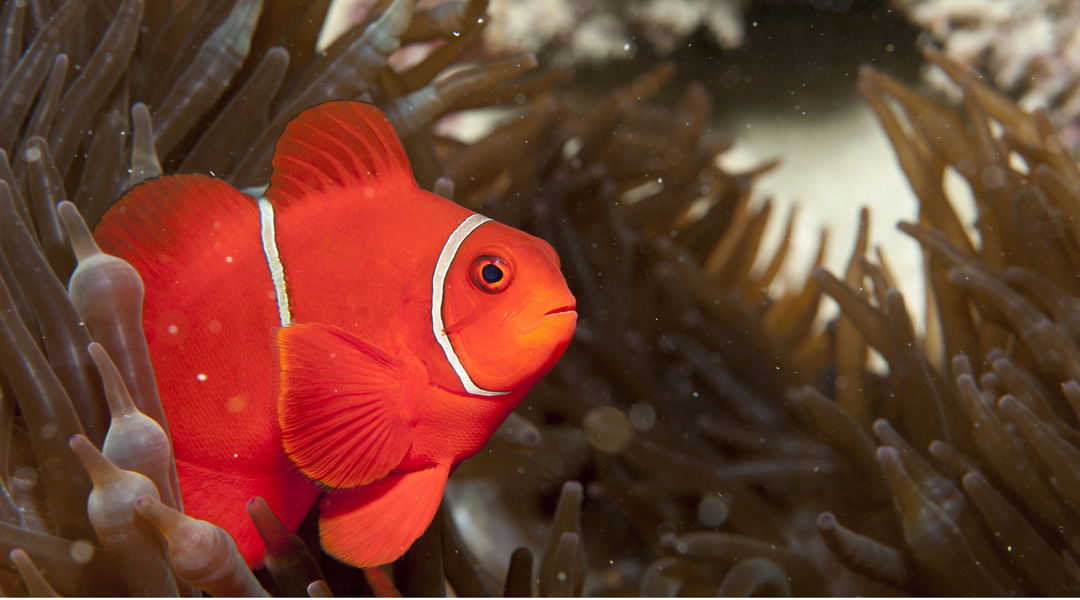
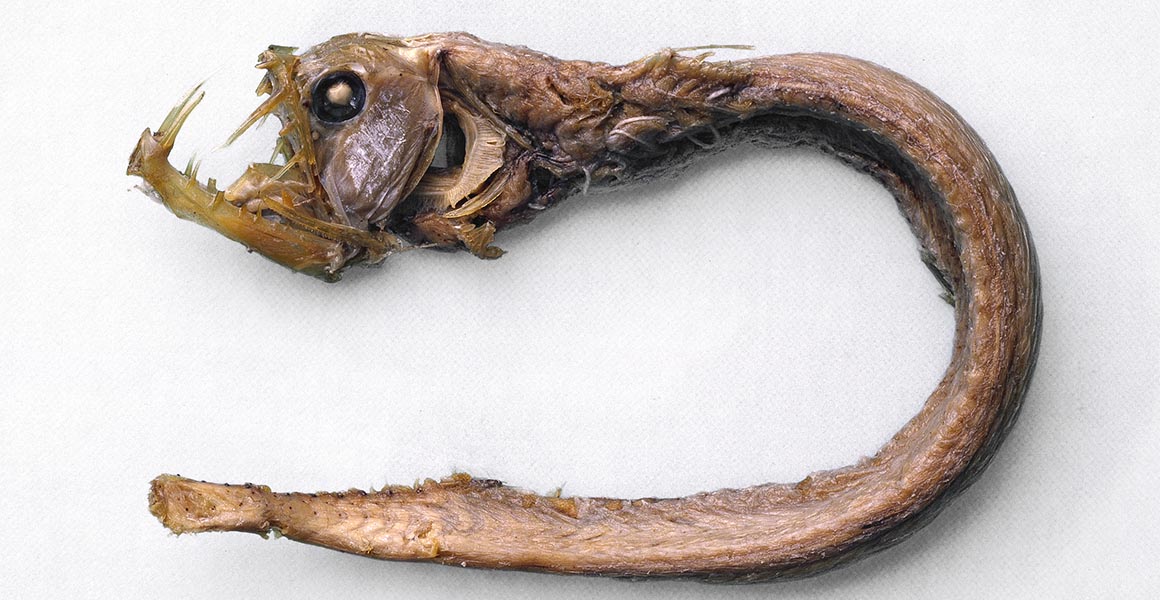

Don't miss a thing
Receive email updates about our news, science, exhibitions, events, products, services and fundraising activities. We may occasionally include third-party content from our corporate partners and other museums. We will not share your personal details with these third parties. You must be over the age of 13. Privacy notice.
Follow us on social media